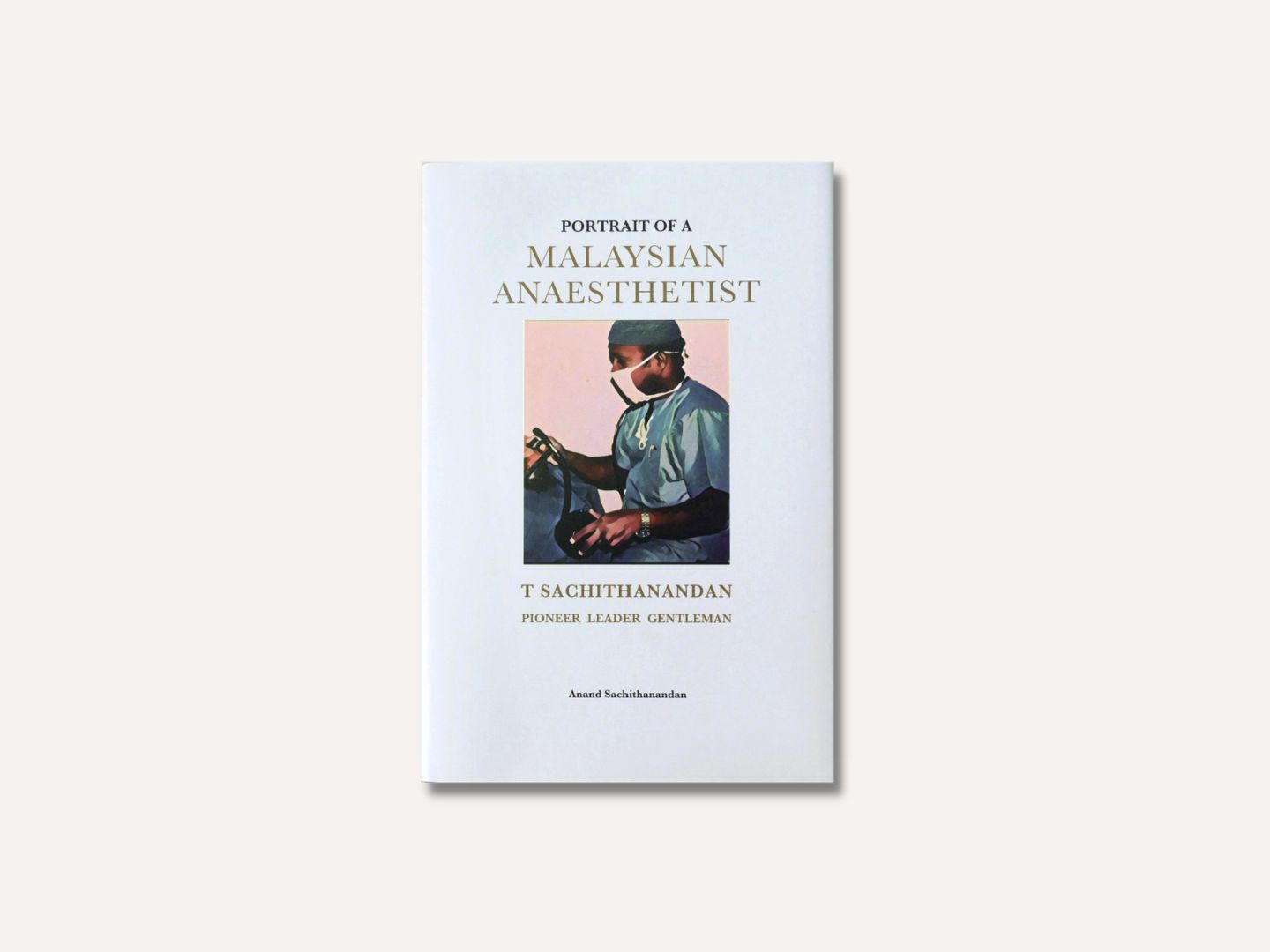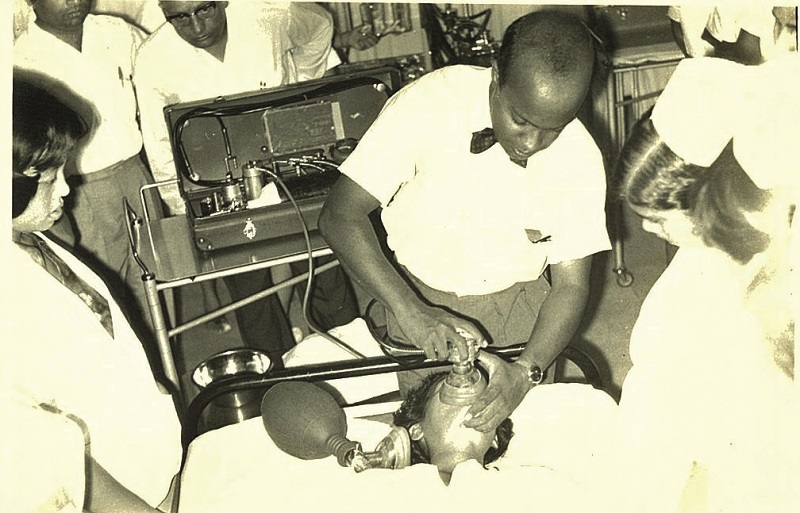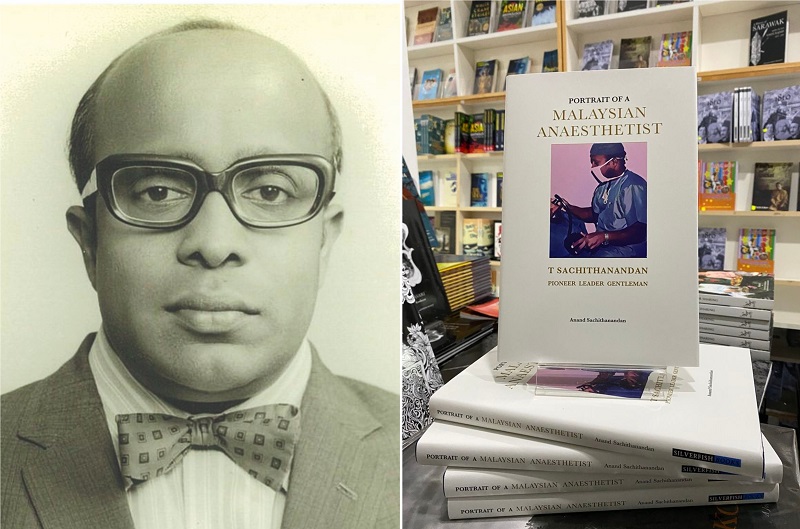
The book is penned by his son, Dr Anand Sachithanandan (All photos: Dr Anand Sachithanandan and Silverfish Books)
In late 1968, the very first intensive care unit (ICU) in a Ministry of Health hospital opened its doors. This was at the General Hospital Johor Baru (since renamed Sultanah Aminah Hospital). The driving force behind it was a visionary young doctor called T Sachithanandan, one of the first Malaysians to qualify as an anaesthetist.
That inaugural unit began with four beds. Five decades on, the country would have ICU facilities at 56 Ministry of Health hospitals nationwide, with a capacity of 691 beds (as at 2017). These facilities have healed and saved countless lives. Indeed, intensive care medicine has been a game-changer for healthcare. And, as the global Covid-19 pandemic has shown, it has been a critical lifeline.
The story of how Malaysia got its first ICU (even before neighbouring Singapore) is one of the many intriguing nuggets in a new book titled Portrait of a Malaysian Anaesthetist: T Sachithanandan — Pioneer, Leader, Gentleman. The biography offers a front-row seat not only to the boundary-pushing career of Sachithanandan but to the evolution of intensive care in Malaysia as well as the poorly understood field of anaesthesiology.
Aside from being a pioneer in intensive care, Sachithanandan led the way in popularising techniques of regional anaesthesia with the use of selective nerve blocks. At the time — the 1960s and 1970s — regional anaesthetics were sparingly used here. The UK-trained anaesthetist also played an outsized role in building postgraduate medical training locally and was a beloved mentor to many junior doctors.
Sachithanandan was the first anaesthetist to lead the Malaysian Medical Association. He co-founded several other important medical institutions, including the Faculty (now College) of Anaesthesiologists of Malaysia in 1975 and was State Anaesthetist of two large states, Johor and Perak. Tragically, he died during heart bypass surgery in London in 1981. He was only 49.
img-20221025-wa0003.jpg

The book is penned by his son, Dr Anand Sachithanandan, who was only eight when his father passed away, leaving a huge void in his life. He currently practises as a cardiothoracic surgeon and is also the founding president of the Lung Cancer Network Malaysia (LCNM). As he neared the age when his father died, he felt moved to learn more about him.
That has culminated in a well-researched and elegantly narrated biopic that is a timely tribute to a titan of local anaesthesiology. The book stands out for authentically tracing the development of anaesthesiology and intensive care during our nation’s formative years. It also shines a light on his father’s days as a student leader in Calcutta and on his time in swinging 1960s London, where he did his specialist training.
However, it is the heartfelt memories of and accolades from the many who worked with him that capture the essence of Sachithanandan’s exceptional life. The late doctor was known for his legendary calm under pressure and remembered fondly for his good nature, charisma and kindness — as well as being a dapper dresser with a fondness for silk bow ties.
The hardcover book was jointly launched by former health director general Tan Sri Datuk Dr Abu Bakar Sulaiman and Professor Marzida Mansor, president of the College of Anaesthesiologists of Malaysia, on Oct 15, (in conjunction with World Anaesthesia Day). It is available at RM100 from publisher Silverfish Books and independent bookstores Gerakbudaya and Lit Books. Proceeds from the book sales will be donated to the Malaysian Society of Intensive Care (MSIC) and the LCNM.
The following are excerpts of Options’ interview with first-time author Anand.
t_sachithanandan.jpg

Options: What spurred you to write this book?
Dr Anand Sachithanandan: My father’s career and life ended prematurely but he touched so very many lives. He always put the well-being of his patients and the welfare of his trainees first. He was an authentic and visionary leader with innovative and progressive ideas. I wanted to capture and celebrate his many contributions to the profession and the country.
You have a demanding career and a young family. How did you find the time?
The Covid-19 pandemic gave me a window of opportunity. During the Movement Control Order lockdowns, I found valuable extra time to research and write, often in the evening after a lengthy day in the operating theatre or on Sundays after my mid-morning ward rounds. I also owe much to my dear wife Hayley, who generously gave me the space and time to write.
Tell us how you gathered information for the book.
My wonderful mother, Punithavathy, who is 82, shared her recollections from decades ago, some of which must have been painful. I also managed to connect with my father’s few surviving contemporaries and his junior doctors, who willingly shared insightful anecdotes. For the historical information, I drew upon websites, newsletters and other publications such as Berita Anestesiologi. I also fortuitously discovered a dusty old folder of letters between my father and my grandfather from the early to mid-1950s, which gave me a precious glimpse into his life then.
What do you hope to achieve with the book?
The book is not just a tribute to my father but also to the work ethic and struggles of the first-generation anaesthesiologists during our nation-building years. For me, writing it was cathartic. His exceptional life fills my heart with pride and hope. It also inspires me to be a better person and doctor. I hope his story similarly inspires others.
Purchase a copy of 'Portrait of a Malaysian Anaesthetist: T Sachithanandan — Pioneer, Leader, Gentleman' at RM100 from Silverfish Books here.
Sunita Sue Leng is a writer and former associate editor at The Edge Singapore.
This article first appeared on Oct 31, 2022 in The Edge Malaysia.


